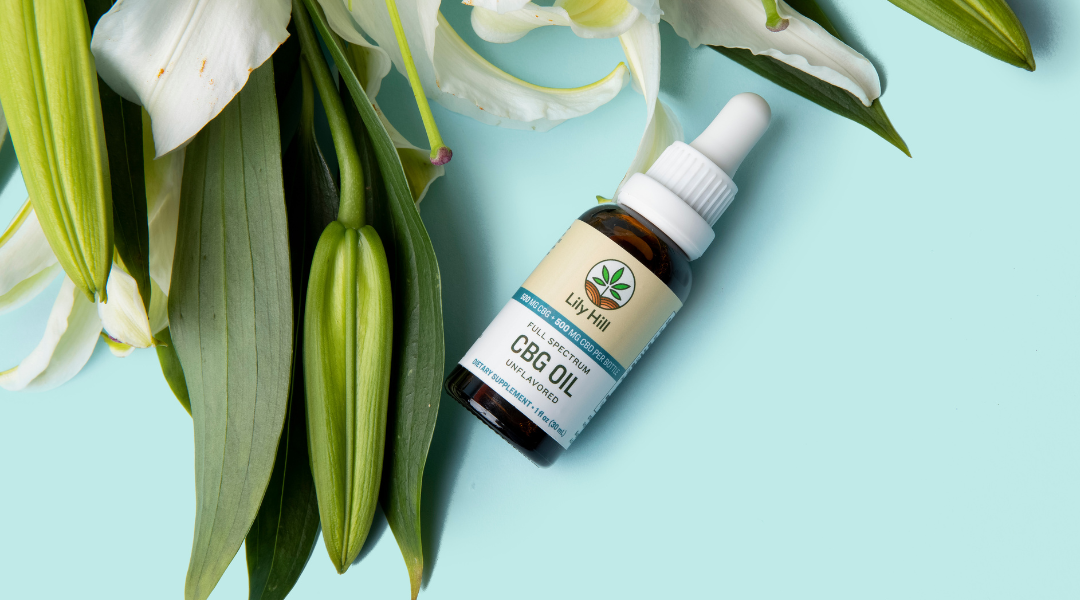
What is CBG?
By now, most people are familiar with the effects of cannabis and the two major cannabinoids found within it: CBD (cannabidiol) and THC (tetrahydrocannabinol). With over 100 cannabinoids found in the cannabis plant, other cannabinoids are starting to steal the spotlight.
One of these other cannabinoids is cannabigerol (CBG). We are only beginning to understand the potential benefits of CBG, but this cannabinoid is gaining attention quickly due to its proclaimed anti-bacterial, anti-microbial, and anti-inflammatory properties.
Plant Magic: How is CBG Made?
CBG is the chemical parent to CBD and THC. While the cannabis plant grows, it produces cannabigerolic acid (CBGa) which is the first cannabinoid that forms within the plant. Through photosynthesis during the flowering cycle, CBGa is converted to THCa and CBDa which are the precursors for THC and CBD.
Because of CBG’s ability to transform into other cannbinoids, it’s being called the “stem cell” of cannabinoids!
How does CBG work within the body?
Like most cannabinoids, CBG works by interacting with the endocannabinoid system (ECS). The ECS is a biochemical communication system that helps keep the body in homeostasis by performing different functions in different areas of the body (you can learn more about the ECS in this blog post). CBG binds to the CB1 & CB2 receptors in the ECS. CB1 receptors are found in the nervous system and brain, while CB2 receptors are located in the immune system and other areas of the body. The interaction of CBG with these receptors is showing promise to support a wide range of conditions.
CBG has also been shown to have the ability to increase anandamide, which commonly referred to as the “bliss molecule”. Anandamide is an endogenous cannabinoid that helps regulate a wide range of bodily functions including appetite, sleep, mood and the immune system.
CBG's Potential Healing Properties
There is much more to learn about CBG, but existing research shows that CBG has excellent healing potential.
Anti-microbial. CBG has been shown to have antibacterial and antimicrobial properties. Researchers found that CBG could be a potential treatment for methicillin-resistant Staphylococcus aureus (MRSA) which is a type of staph infection that is highly resistant to certain antibiotics.
Anti-Inflammatory. In a 2013 animal study, CBG demonstrated its ability to reduce colon inflammation in rats. This suggests that CBG may be an effective treatment for inflammatory bowel disease (IBD) symptoms.
Cancer Fighting. There have been studies showing that CBG may help fight cancer by blocking the receptors that “turn on” cancer cell growth. In one such study, it was shown to inhibit the growth of colorectal cancer cells in mice, in turn, slowing colon cancer growth.
Neuroprotective. A 2015 study examining CBG found that it was “extremely active as a neuroprotectant” – meaning it has properties that help protect and heal our nervous system. The findings suggest that CBG could be a treatment for certain neurodegenerative conditions such as Huntington's Disease.
Glaucoma Treatment. You can find ECS receptors in the eyes and CBG has proven to reduce intraocular pressure making CBG a useful candidate for treating glaucoma.
The Future of CBG
If CBG has so many promising benefits, why has it not made it to the mainstream like CBD? Well, expect to see more CBG soon!
When the cannabis plant is ready to harvest, most of the CBGa has been converted into other major cannabinoids such as CBD and THC. This leaves the plant with about 1% CBG compared to its much higher CBD content (up to 20% in some plants). Therefore, you would have to grow 20 times the amount plants to get the same amount of CBG as CBD. Then humans got involved and applied their science to sort out this cannabinoid inequality!
Cannabis breeders have been working for years to develop strains with their desired characteristics, such as specific cannabinoid and terpene profiles. Oregon CBD, one of the world’s leading cannabis breeders, released two high-CBG strains in 2020. These CBG-specific strains are capable of producing flower with upwards of 20% CBG while remaining below 0.3% total THC. This season at Lily Hill, we have been growing a CBG strain from Oregon CBD. We will be adding CBG to our product lineup; look for our new CBG products in the coming months!
With the potential medical benefits stacking up and breeders developing plants to have a higher CBG percentage, there is a good chance you may see more CBG products having a place on the shelves next to their CBD counterparts.

